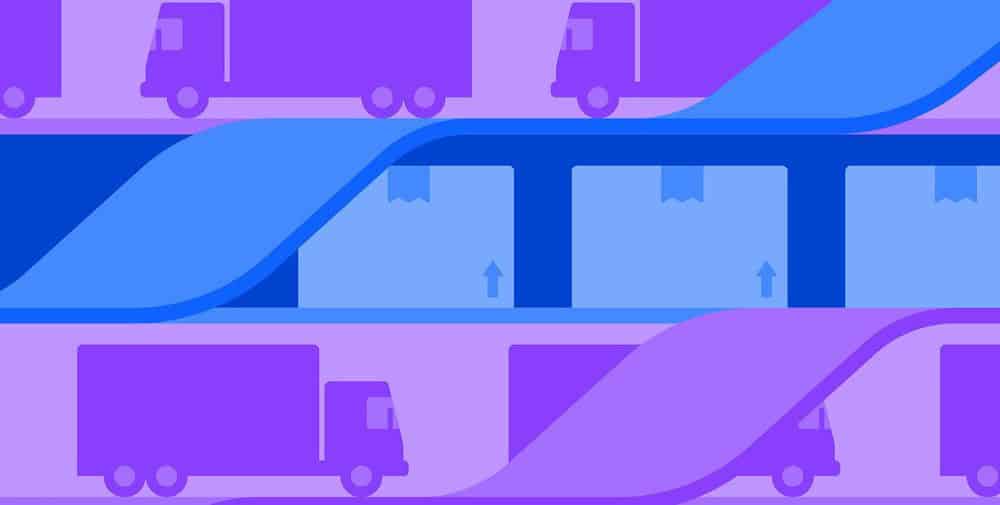Programmers, coders, software engineers and software developers – different professions are involved in the development and programming of software. The approaches to the respective development process are no less different. Is a project being developed for a customer (customer-specific) or a clientele (commercial)? Does it progress towards its goal in clearly defined stages – i.e. like a waterfall – or in smaller, not necessarily consecutive steps – i.e. agile?
For a long time, software development followed the assembly line method developed by Henry Ford. The agile concepts introduced in 2001 not only changed the speed, but also the possibilities of software development.
If you would like a detailed overview of software product development, we also recommend the article “The 3 valves of high-performance software product development” by our member DevBoost GmbH.
Steps of software development
- requirements analysis: This first step involves collecting and documenting the requirements for the software. Developers work closely with stakeholders to understand their needs and ensure that the software developed meets these requirements.
- planning and design: In this phase, the requirements are transformed into a detailed plan and design. The architecture, database structure, user interfaces and other key aspects of the software are specified. Decisions are also made about the technologies and frameworks to be used.
- implementation: This is where the actual coding of the software begins. Developers write the code according to the previously created plans and designs. This step requires extensive programming knowledge and the ability to write efficient and maintainable code.
- testing: Once the software is implemented, it must be thoroughly tested. There are different types of tests, including unit tests, integration tests, system tests and user acceptance tests. The aim is to find and correct errors before the software goes into production.
- deployment: After successful testing, the software is transferred to the production environment. This can include installation on servers, distribution to end users or publication in app stores.
- maintenance and further development: The work is not finished after deployment. The software needs to be continuously maintained and updated to fix bugs, improve performance and add new features.
Tools in software development
- Version control systems (VCS): Tools such as Git and SVN are essential for managing code, tracking changes and facilitating team collaboration.
- Integrated Development Environments (IDEs): IDEs such as Visual Studio, IntelliJ IDEA and Eclipse provide comprehensive development environments that support the programming process through syntax highlighting, debugging and other features.
- Project management tools: Tools such as Jira, Trello and Asana help manage tasks, track progress and coordinate within the team.
- CI/CD tools: Continuous integration and continuous deployment tools such as Jenkins, Travis CI and GitHub Actions automate the build and testing process and enable frequent, reliable releases.
- Testing tools: Frameworks and tools such as JUnit, Selenium and Postman support automated and manual testing of the software.
- Containerization and orchestration: Docker and Kubernetes help to package and manage applications in containers, which simplifies deployment and scaling.
Software development methods
Agile methods
Agile methods have revolutionized software development as they focus on flexibility and continuous improvement. The best-known agile methods are
- scrum: Scrum is a framework based on iterative and incremental development. Teams work in fixed time periods, known as sprints, which typically last two to four weeks. At the end of each sprint, a functional product increment should be available. The central roles in Scrum are the Product Owner, the Scrum Master and the development team.
- kanban: Kanban focuses on the visualization of the workflow and continuous improvement. Tasks are displayed on a Kanban board that shows the different phases of the work process. This allows teams to identify bottlenecks and optimize their workflow.
DevOps
DevOps is a combination of the terms “development” and “operations” and aims to improve collaboration between software developers and IT operations. DevOps promotes a culture of collaboration, automation and continuous integration and delivery (CI/CD).
- Continuous Integration (CI): CI means that code changes are regularly (often several times a day) integrated into a central repository. Automated tests are carried out to ensure that new changes do not affect existing functions.
- Continuous Delivery (CD): CD goes one step further and automates the deployment process so that software can be safely and reliably released into production environments at any time.
Lean development
Lean development originally comes from production engineering and has established itself as an effective method for software development. It aims to minimize waste and maximize value for the customer. The principles of lean development include
- Elimination of waste: any activity that does not create value for the customer is considered waste and should be eliminated or minimized.
- Customer centricity: Development should always be focused on the needs and wishes of the customer.
- Continuous improvement: Processes and products are continuously scrutinized and improved.
Test Driven Development (TDD)
Test Driven Development (TDD) is a method in which tests are written before the actual code is implemented. The process is as follows:
- writing a test for a new function.
- implement the code to pass the test.
- refactoring the code to optimize the functionality without the test failing.
TDD promotes the creation of high-quality code and makes it easier to maintain and extend the software.
Microservices
Microservices are an architectural pattern in which an application consists of a collection of small, independently deployable services that each fulfill a specific business requirement. Each microservice can be developed, deployed and scaled independently. This offers greater flexibility and scalability compared to monolithic architectures.
- Independent scalability: Each service can be scaled independently of the others, improving efficiency and resource utilization.
- Technology diversity: Different microservices can be developed in different programming languages and technologies that best suit their specific requirements.
People involved
- Software developers: Write and maintain the code, implement new functions and fix bugs.
- Project managers: Coordinate the team, plan and monitor the progress of the project and ensure that the goals are achieved.
- Product Owner: Responsible for defining the product vision and prioritizing requirements. They act as an interface between the stakeholders and the development team.
- Testers/QA engineers: Responsible for the quality assurance of the software. They create and perform tests to ensure that the software meets the requirements and is free of errors.
- Designers: Design the user interface and user experience (UI/UX). They ensure that the software is user-friendly and aesthetically pleasing.
- DevOps engineers: Support the automation and integration of development and IT operations processes. They ensure that the infrastructure is reliable and scalable.
Modern software development for brand differentiation and competitive advantage
To use software to differentiate brands and gain competitive advantage, it is critical to master the techniques and technologies that improve the delivery, quality and efficiency of software. Here we explain some of the key approaches and technologies that developers are using today:
Artificial intelligence (AI)
AI makes it possible to develop software that mimics human decision-making processes and learning abilities. Using technologies such as neural networks, machine learning and natural language processing, developers can create products and services that transform the market and provide a competitive advantage. IBM Watson, for example, provides APIs that enable developers to integrate AI services into their applications. Watson can also be used to improve product requirements by identifying ambiguities, unclear actors and missing entities.
Cloud-native development
Cloud-native development refers to the creation of applications that are specifically designed for use in cloud environments. These applications consist of modular, reusable components, known as microservices, which are provided in containers. This architecture makes it possible to maximize the performance, flexibility and scalability of the applications by taking advantage of the cloud environment.
Cloud-based development
Just as IT companies use the cloud to improve resource management and reduce costs, software development companies are also turning to the cloud. The cloud serves as a flexible and cost-effective integrated development environment (IDE) or platform-as-a-service (PaaS). These environments support coding, design, integration, testing and other development tasks and provide access to APIs, microservices, DevOps tools and other services.
Blockchain
Blockchain technology provides a secure, digitally linked ledger that eliminates costs and vulnerabilities caused by middlemen such as banks or regulators. It enables companies to speed up processes, reduce transaction costs and create new business models. Developers use distributed ledgers and open source technologies such as Hyperledger to develop innovative solutions and transform business operations.
Low-code development
Low-code platforms make it possible to develop applications using visual and declarative techniques instead of traditional programming. This reduces the need for extensive coding and allows non-programmers or “citizen developers” to create applications quickly and cost-effectively. Forrester defines low-code as products and cloud services that can be used with minimal financial and training effort.
Analysis
The demand for data scientists, data developers and data engineers is growing steadily as companies increasingly emphasize the importance of gaining valuable insights from large amounts of data. Software developers are therefore integrating advanced analysis functions into their applications. Cloud-based services and APIs facilitate data analysis, automate predictive analytics and create dashboards that provide new insights and improve decision-making.
Model Based Systems Engineering (MBSE)
MBSE uses software modeling languages to enable early prototyping, simulation and analysis of software designs. This method helps to analyze and refine project requirements and move quickly from design to implementation. MBSE supports the early validation of designs and helps to improve software quality.
Mobile development
Developing mobile apps that are fully connected to data is key for software developers to enrich the user experience. According to Forrester, the integration of digital and mobile customer data has a significant impact on how customers interact with brands. A well-developed mobile app can therefore significantly increase customer loyalty and satisfaction.
Conclusion
Software development is a dynamic process that requires a large number of process steps, development tools and experts. Each process step in the development cycle needs to be carefully considered in order to produce high-quality software. The aim is always to meet the user’s requirements and to continuously develop the software even after it has been launched. The development process can be made efficient and successful through the use of suitable tools and the collaboration of a team put together using modern methods. Depending on the type of software, the development process, the tools and methods used and the groups of people involved can vary considerably. There is therefore no such thing as a single software development process. Rather, the intended product and its area of application determine the path to be taken.
– – – – –
Further links
👉 “The 3 valves of high-performance software product development”
Image: Canva
– – – – –
This article was written exclusively for “NEXT In Focus: Software”.
👉 To the complete edition of the magazine



